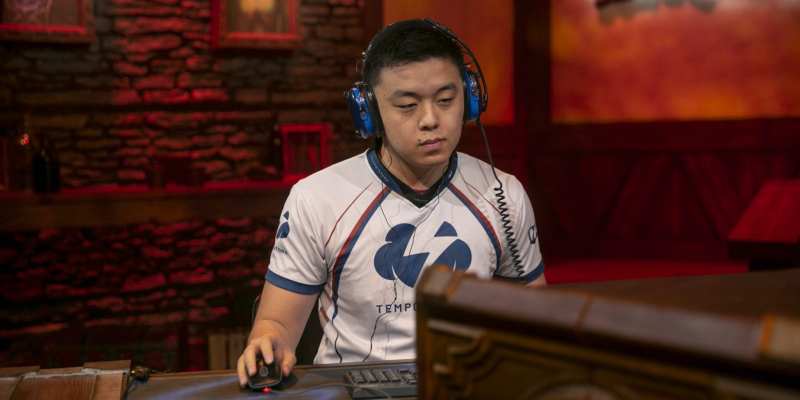The world of esports has a problem. The problem runs deep, and it’s preventing esports from breaking out into the wider culture.
People love sports. In the United States, the most recent Super Bowl was broadcast to over 100 million viewers. That means that over 40% of the country’s adult population watched the game. That’s huge. For better or worse, things like The Tonight Show, The Voice, and The Big Bang Theory are viewed as the dominant television programming in the U.S. But the viewership of those shows is peanuts compared to the average Super Bowl. Nothing else comes close. And despite all the hype given to the Super Bowl it has about one-tenth the viewership of the World Cup.
My point is that sports are ridiculously popular. At the same time, video games are also really popular. Some people will tell you that video games have overtaken movies as the dominant entertainment medium, while other people will insist that this hasn’t happened quite yet. Either way, it seems like combining sports with video games should be a slam dunk. But it isn’t.
At best, you might hope that the two forms of entertainment have some kind of synergy and can combine audiences. At worst, you might assume the audience for esports would come from the intersection of the two mediums. Perhaps esports fans would include everyone who likes both. Instead, esports is literally millions of times smaller than either medium. Check out the audience of a typical ESL championship match. That looks to be about the same attendance I’d see at high school football games. Even if you include the people watching from home via streams, the viewership is still more in line with amateur sports than professional games.

The problem is that esports are inherently insular in a way that makes it hard to engage with the contest if you’re not already familiar with the game. People who don’t play football can still follow the game, but good luck making sense of DOTA, Hearthstone, or Starcraft II matches if you don’t play.
A good contest needs to give players a way to distinguish themselves. A matchup with a random outcome isn’t very interesting to watch. There’s a reason coin flipping and dice rolling aren’t Olympic events. The better a player can distinguish themselves, the more interesting it is to watch them compete. In traditional sports, this means the contest is based around physical action that tests the strength, speed, and accuracy of the players. Computer-based competition is more cerebral. The problem with making the contest cerebral is that it also makes everything harder for the audience to follow.
When two teams are playing traditional sports, it’s easy to make sense of the action and understand why one team is overcoming another. Even if I don’t understand the esoteric rules behind offsides, fouls, free kicks, corner kicks, or when and how players are allowed to touch the ball, I can still immediately intuit what players are trying to do. I can tell that a team is winning because they’re outrunning, outmaneuvering, or out-shooting their opposition. It’s a conflict based on physical movement. When two teams struggle for ownership of the ball, I can tell that one side gained the upper hand because they demonstrated superior physicality. When LeBron James sinks a half-court shot, I can understand what happened just by looking at him. Even if I’ve never held a basketball before, I can see the size of the net and understand the challenge this move represents.
Video games are more like chess. Players distinguish themselves through strategy and masterful knowledge of the game’s systems. You can’t enjoy watching chess unless you already know how to play. A viewer who hasn’t played DOTA doesn’t know what the individual heroes can do or why Winter Wyvern is a hard counter to Lycan. Even in games like Starcraft, where much of the action is determined by who clicks on their units and issues orders the fastest, the audience can’t really see that furious clicking or understand how it relates to the action.

Even if I know enough about Starcraft to understand that one player has a more powerful army than the other, it’s still not obvious why they have a more powerful army. Even if you’re lucky enough to have someone explain things to you, it still doesn’t help you overcome your massive knowledge deficit as a viewer. You’ll end up having a conversation like this:
Q: Why did the Blue player lose? Their armies looked to be about the same size, but Red crushed them easily.
A: Blue had a lot of units, but they were weak units and they didn’t have any upgrades.
Q: OK. So why didn’t Blue build better units and upgrade them more?
A: Because Blue had fewer resources. They couldn’t afford expensive units and upgrades.
Q: So why didn’t they gather more?
A: Because their economy wasn’t as robust due to having fewer bases.
Q: So why didn’t they have more bases?
A: Because five minutes earlier they didn’t expand to a new base. Instead they spent their resources on a push that didn’t do enough damage to their opponent.
Q: But why didn’t their attack do more damage?
A: Because they failed to properly manage their specialist units.
In the real world, this exchange would be a dozen times worse because the expert would probably be explaining things using a lot of confusing jargon. It’s not because they’re a jerk. It’s just really hard to explain complex topics without using the convenient and compact jargon that experts are used to.
In any case, the newbie needs to understand the game on a fairly deep level before they can even grasp the basics of what they’re seeing. I love watching Starcraft II matches, but I’ll admit it’s nearly a worst-case scenario for a spectator sport. Not only do you need to know how to play the game before you can watch it, but the action is spread out all over a map so that the audience often can’t hope to keep up. In sports, we usually have the ball acting as a focal point for the action and the audience can follow the game by watching the ball. In a Starcraft match, the action hops from one side of the map to the other without warning, and very often there are important actions taking place simultaneously in different locations.

You might think that a game like Street Fighter would make for a good esport. The gameplay is mostly based on reflexes and timing, which makes it more like tennis and less like chess. Getting the precise timing down so you can hit a frame-perfect move is hard, and doing it reliably takes incredible dedication and practice. The problem is that even when you have the top two Street Fighter players in the world, none of their skill is visible to a non-player. If you don’t already know the game, then the battle between professional players doesn’t look all that different from a couple of toddlers mashing on the buttons at random. The pros are doing something incredibly difficult, but the audience can’t tell that by looking at the screen.
Games are a little more approachable if you move away from the ones based on strategy and towards something like shooters. Everyone understands how bullets work, and since the games are about aiming and positioning, they stick pretty close to the sorts of challenges people face in traditional sports. The downside of these games is that they don’t have a good point of view for spectators. Sure, they have modes where you can look out through the eyes of the players, but that’s a really disorienting way to experience the game. It’s like trying to watch football entirely through cameras mounted on the players’ heads.
Probably the most approachable of the major esports games is Rocket League, although you could argue that’s a bit of a cheat since it just adopts the existing mechanics of soccer. A soccer fan might look at Rocket League and say, “That’s cute, but why wouldn’t I just watch football when it already has the teams I care about?” Rocket League is sort of limited to people who enjoy the idea of watching football but who haven’t yet built any connection to the sport. I won’t claim those people don’t exist, but it doesn’t seem like an ideal audience.

So why does this matter? Who cares if esports are popular?
I think there’s an opportunity here. I think it’s possible for the right game to go beyond the hardcore gaming culture and reach a more mainstream audience. If a studio manages to pull this off, they could be in a position to become the NFL or FIFA of gaming. There’s a lot of money to be made for the first person to figure this out. Also, I think having an esport reach non-gamers would be good for the hobby. FIFA has been embroiled in scandal. The same goes for the NFL. Despite the ongoing concerns of financial corruption and human harm, sports fans still enjoy the games and nobody is talking about banning these sports or discouraging kids from playing them. Meanwhile, we still get the occasional moral panic over the simulated violence in video games. I like to think that non-gamers would be less likely to demonize games if they were occasionally exposed to the hobby on television. By showing adults playing games, esports could help destroy the notion that games are for kids, which would go a long way towards normalizing the hobby.
Here’s what I think a developer would need to do in order to create a game that works as a spectator sport:
- There needs to be a comfortable spectator viewpoint. The environment should be designed with the understanding that the audience will need a good place to watch the action. Obviously you don’t need to build literal stands for people to sit in, but there needs to be some way to position the camera within the scene so that the people at home can follow the action. This means the game probably can’t take place in twisting corridors, where walls might block our view, and the action shouldn’t be obscured behind layers of smoke and particle effects.
- The audience needs a single point of focus. While the ball serves this purpose in traditional sports, the focal point can be anything. The bomb in Payload matches of Team Fortress 2 is a really good example of an object that can clearly communicate to the audience what the goals are and how well each side is doing.
- The game should be based on something people already understand in the real world. People understand kicking a ball around a field. They understand how gunfights work. They understand how armies work. But people don’t understand the innumerable cards you find in collectible card games or the lane-pushing of MOBAs, which is usually dominated by special abilities that the viewer can’t intuit. Whatever the game is about, the central action needs to be something the viewer can understand visually.
- Team games are probably a better bet than contests between individuals. Players come and go, but teams endure for generations. It’s easier to develop a connection to a sport if you’ve got a fixed slate of teams. Viewers can adopt favorite teams and develop rivalries that will drive the drama outside of the game.
- The game probably shouldn’t be too violent. This is a tricky one. Sports like boxing, hockey, and American football all feature a dose of real-world violence. A lot of fans watch these sports specifically because they like the violence. This ought to give developers lots of room to make their game violent enough to appeal to these folks. After all, if it’s okay to build a sport around punching a man in the face until he loses consciousness, then blowing up a human-shaped group of pixels should be no big deal. But people are really funny when it comes to violence, and history has shown that non-gamers get very sensitive about violence in games.
It should probably go without saying, but the game also needs all the other features of competitive gameplay. It needs to be fun, it needs to be balanced, it needs to be good at teaching the player, and it needs to look good. I’m not saying it would be easy to craft a mainstream esport, but I do think it’s possible.
